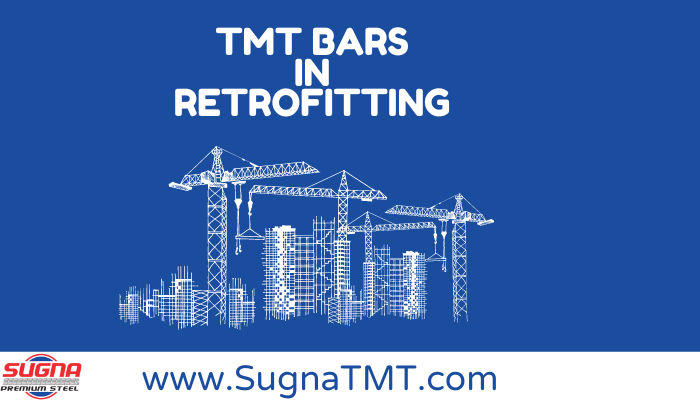The world of construction constantly evolves, and with it, the need to enhance the resilience of existing structures becomes imperative. Retrofitting, a process that involves strengthening buildings and infrastructure to meet modern safety standards, plays a crucial role in ensuring the longevity of constructions. In this article, we delve into the specific realm of TMT (Thermo-Mechanically Treated) bars and their pivotal role in retrofitting existing structures.
Understanding Retrofitting
Retrofitting, in essence, is the process of upgrading and fortifying existing structures to withstand various stress factors. Aging buildings often face challenges such as reduced load-bearing capacity, corrosion, and seismic vulnerabilities. Retrofitting aims to address these issues, ensuring that structures remain robust and resilient.
The Role of TMT Bars in Retrofitting
TMT bars, known for their exceptional strength and durability, have emerged as a preferred choice in retrofitting projects. These bars undergo a specialized manufacturing process that involves heat treatment and controlled cooling, resulting in a product with superior mechanical properties. This makes TMT bars an ideal solution for reinforcing structures and enhancing their overall performance.
Advantages of Using TMT Bars in Retrofitting

Corrosion Resistance
One of the primary concerns in retrofitting is combating corrosion, especially in structures exposed to environmental elements. TMT bars, with their corrosion-resistant properties, provide a long-lasting solution, reducing maintenance costs and extending the life of the structure.
Enhanced Tensile Strength
TMT bars exhibit high tensile strength, making them capable of withstanding significant loads and stresses. This attribute is particularly crucial in retrofitting, where the goal is to enhance the structural integrity of the building.
Ductility and Flexibility
The inherent ductility of TMT bars allows them to deform under extreme conditions without compromising their structural integrity. This flexibility ensures that the bars can absorb and dissipate energy during seismic events, making them an ideal choice for earthquake-prone regions.
Selection Criteria for TMT Bars in Retrofitting
Choosing the right grade and specifications of TMT bars is paramount in achieving successful retrofitting. Factors such as the load-bearing requirements, compatibility with existing materials, and adherence to building codes must be carefully considered. Consulting with structural engineers and professionals is crucial for making informed decisions.
Challenges and Solutions
Despite the many advantages, retrofitting with TMT bars is not without challenges. Compatibility issues with existing structures and the need for skilled labor are common concerns. However, ongoing research and development aim to address these challenges. Innovative solutions, such as pre-engineered retrofitting systems and advanced installation techniques, are constantly being refined to streamline the retrofitting process.
Future Trends in Retrofitting with TMT Bars
The future of retrofitting holds exciting prospects. Technological advancements, including the integration of smart materials and advanced monitoring systems, are on the horizon. Additionally, a growing emphasis on sustainability is likely to drive the development of eco-friendly TMT bars, aligning retrofitting practices with global environmental goals.
Importance of Compliance and Regulations
Ensuring that retrofitting projects meet building codes and regulatory standards is paramount. TMT bars, when used in compliance with established guidelines, not only enhance structural integrity but also contribute to overall safety. Adherence to regulations ensures that the retrofitting process aligns with industry standards, providing peace of mind to both builders and occupants.
Environmental Impact
TMT bars, with their recyclable properties and energy-efficient manufacturing process, contribute positively to environmental sustainability. As the construction industry increasingly embraces eco-friendly practices, the use of TMT bars aligns with the broader goal of reducing the carbon footprint associated with retrofitting projects.
Comparisons with Other Retrofitting Techniques
Compared to traditional retrofitting methods, such as carbon fiber wrapping or steel plate bonding, TMT bars offer distinct advantages. The comprehensive strength, corrosion resistance, and ductility of TMT bars provide a holistic solution to the challenges posed by aging structures. Their versatility makes them suitable for a wide range of retrofitting applications.
Conclusion
In conclusion, TMT bars stand as a formidable choice for retrofitting existing structures. Their corrosion resistance, enhanced tensile strength, and flexibility make them indispensable in addressing the challenges posed by aging buildings. As the construction industry continues to evolve, TMT bars emerge as a beacon of reliability in ensuring the longevity and safety of structures.

